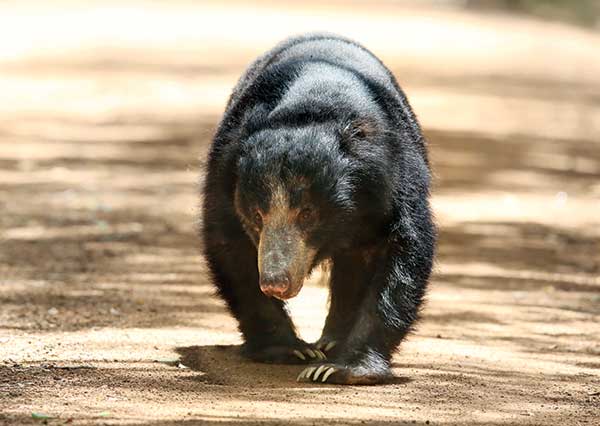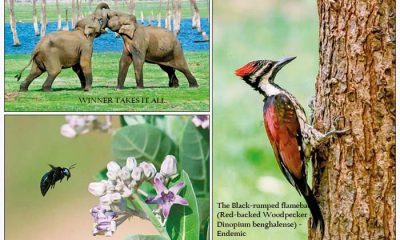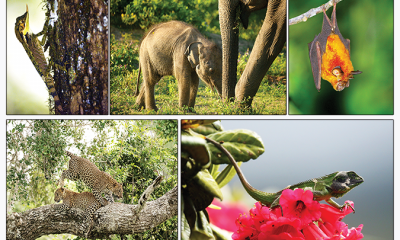Features
More on Wilpattu, natural systems and exotic flora
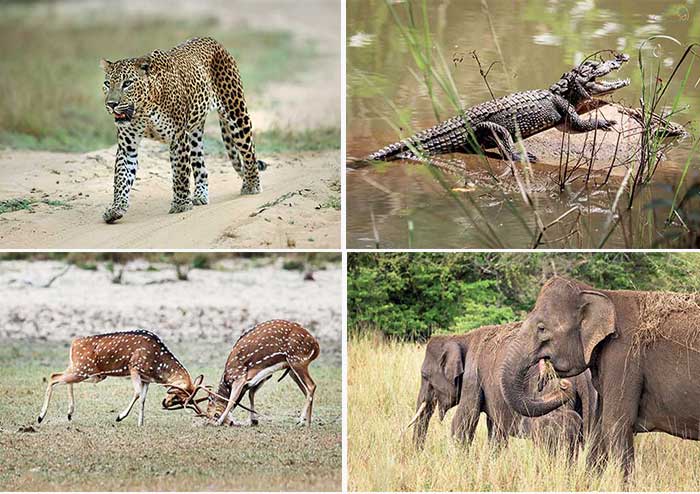
Excerpted from the authorized biography of Thilo Hoffmann
by Douglas B. Ranasinghe
During the years that followed 1985, the Park was closed and abandoned. Animals in it were slaughtered, especially buffaloes, wild pig, sambhur and deer. All the visitors’ and staff bungalows were ransacked and largely destroyed by roaming poachers, criminals and timber thieves.
In 2005 the Park was reopened, with a hardworking Park Warden, Wasantha Pushpananda. At his request and the urging of Geepal Fernando, Thilo spent nearly two million rupees on the reconstruction of the Talawila bungalow, in memory of his wife.
Only two years later the Park was again abandoned with the re-emergence of incursions from surrounding areas. Warden Pushpananda was killed. Again wildlife was depleted, and the re-built bungalows ransacked. After the fall of the LTTE, the Park was opened for visitors again in 2010. Once more, Thilo restored the bungalow.But pressure to open the coastal tract for through-traffic to Mannar persists. An easy alternative from Nochchiyagama via Nikawewa and Tantirimalai to Cheddikulam is ignored.
While this was being written, certain authorities have illegally and arbitrarily cut a new road along the coast within Wilpattu, and developed and opened for public use the Army road, damaging the ecology of the National Park on an unprecedented scale. The matter is being contested in court. Several conservation bodies, including the WNPS and Ceylon Bird Club – Thilo’s roles in these are described later – have been battling to uphold the law and save the Park. At their initial meeting and first press conference Thilo, now retired and in Sri Lanka for an annual stay of several months, was an invited speaker.
Natural systems and exotic flora
A `patana’ (sometimes anglicized as ‘patna’) is a grassland of Sri Lanka in the hills or mountains without trees or shrubs but typically intersected by sholas, described below. A `talawa’ is a savanna-type grassland with trees or groups of trees spaced some distance apart; these are mostly fire-resistant species. (Both are traditional Sri Lankan terms).
The afforestation of patanas and talawas with the exotic Pinus caribaea trees was a major point of contention between Thilo, representing the WNPS, and the Forest Department (the ‘FD’).
The FD claims that both patanas and talawas are man made systems whose lands had originally been under forest. Thus they misname the establishment of sterile pinus or eucalyptus plantations as “re-afforestation”. One Conservator of Forests had even proposed the “re-afforestation” of the open plains in the National Parks of the Yala complex, on the same reasoning. Thilo observes:
“When the advocates of pinus claim that under it indigenous species can freely develop, they think of infillings and plantings in degraded wet zone forests, e.g. around Sinharaja. Consider the biological (floral and faunal) composition of ‘dry patanas’ and talawas, and the indisputable fact that in both systems plants and other living organisms have evolved which are confined to these systems as their exclusive habitat.
“One example is the daffodil orchid (Ipsea speciosa) which is endemic to the patanas. It takes a very long time for a species to evolve and establish itself, wherefore the presence of endemics in a system is a strong indication that it is natural and not man-made. The existence of sholas also tends to support this view. It can further be assumed that prehistoric man at the relevant time had neither the means nor the need to clear such large areas permanently.
“By establishing the alien monocultures the FD has practically destroyed climax-type natural systems which only 50 years ago and for at least one hundred thousand years before have characterized the hill country, especially the Uva Plateau and the adjoining foothills.”
Against strong majority opinion, Thilo thus maintains that patanas, typically with sholas (see below), are a natural system, considering other factors, too, such as climate, soil conditions, exposure and topography – not man-made, although during the last three centuries selected patanas were seasonally burnt by the few thinly-spread inhabitants of the area.
Today there are few remnants of typical patanas and none of any sizeable extent. During the last half century patanas have been degraded and destroyed not only by the Forest Department but also through systematic State-sponsored settlement and the subsequent opening for cultivation of even the steepest slopes. The State has failed to recognize and appreciate patanas as a national system of value and to protect at least one typical and sufficiently large extent of these original grasslands. Patanas covered about 160,000 acres or 250 square miles (650 square km) of land, mainly in Uva.
Thilo condemns the establishment of pinus plantations not only because these destroy such natural systems and diversity but also for aesthetic reasons. He explains:
“There are no conifers native to Sri Lanka. Any plant belonging to the family with needles instead of leaves is a ‘double alien’ also because of its utterly out-of-place appearance in our scenery and environment. Pinus plantations alter the landscape massively – dark, nearly black, brooding patches in an otherwise bright and pleasant world.
“These are alien monocultures which exterminate the rich fauna and flora of the patanas and talawas. They might well be characterized as ‘man-propagated invasive foreign flora’, a term which has recently been much talked and written about. [See below.]”
Another important fact was overlooked, and seems to be largely unknown. Thilo points out that healthy, natural Sri Lankan forests do not catch fire even under extreme conditions. In order to clear the land the vegetation consisting of trees and undergrowth has to be felled and at least partly dried before a fire can be started.
Decades ago when he was traveling at night in the dry zone during the annual drought, dozens of chena plots would be ablaze, the fire having being fanned by the strong kachan wind. But when it was over, and only white ash remained, the surrounding forest at the very edge of the clearing was hardly singed, the fire being unable to spread.
On the other hand, pinus plantations, which are supposed to “re-afforest” the patanas, burn out easily and completely due to their resinous nature. All too often this happens. Thilo remembers this unique region as it was in his early years:
“In the late forties and the fifties of the last century the Uva Basin was very thinly populated. Traditional ways of life prevailed in much of the Uva Province; pack bulls were yet a common sight in its remoter parts.
“In the Uva Basin, large tracts of open patana covered most of the undulating area, with villages and paddy lands confined to and hidden in the river valleys. These patanas were then the main habitat of the painted partridge which is now restricted to a small area near Bibile. The endemic daffodil orchid was present in most of the Uva patanas, including those at Chelsea Estate and along the road from Bandarawela to Welimada.
“There were no forests except the so-called sholas, which are narrow strips of forest along the small water courses that have cut their way into the hillsides. These sholas are rich systems with many plant species and animals. Muntjac, mouse deer, pangolin, porcupine, hare and a great variety of birds found suitable habitats in them. Where patana and forest meet the dividing line is sharp, clearly defined and permanent; there is no “creeping” of the forest or shola in to the patana grasslands.”
(‘Shola’ is a word of Indian origin. With regard to the Uva plateau see also Thilo’s description in W.W.A. Phillips’s Handbook of the Mammals of Ceylon, Second edition, 1980.)
Early in the last century Bella Sidney Woolf, sister of Leonard, in her book How to See Ceylon aptly describes the Uva Plateau as “one of the great open spaces of the world that gives one a sense of freedom”. G. M. Henry, the ornithologist, who was active in Ceylon up to the middle of the last century refers to “the great Uva patna basin” in his publications. Today it is as cluttered up as most parts of Sri Lanka. Thilo says:
“At that time sholas were also present in many tea estates and were protected by law as stream reservations. Plantation managements strictly maintained these reservations, not only ensuring a high biodiversity in the hillsides, but also a regular supply of clean water for the villages in the valleys below and for their paddy fields.
“Later, as the political situation in Colombo changed and the population increased, these very useful and progressive reservations were gradually encroached upon and cleared by villagers and eventually disappeared, many being finally ‘regularized’ i.e. officially given to the illegal occupants.
“The result in many cases was scarcity of water in the villages, and often landslides. In the mid 20th century there were practically no landslides in Uva; today they occur regularly. The state then did nothing at all to enforce the law on these stream reservations, which still exists as a ‘dead letter’.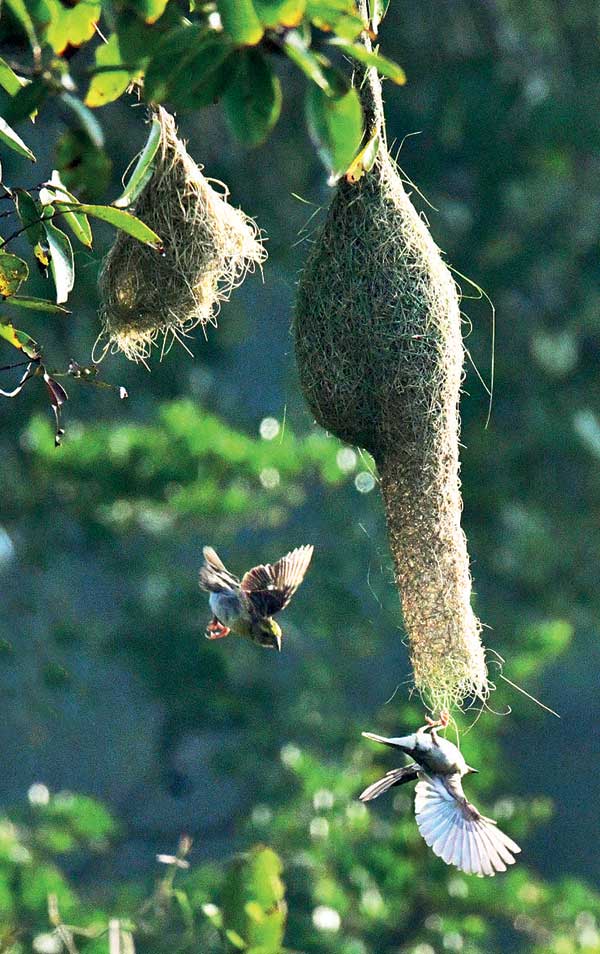
“Soon the Government also decided to settle people in the large extents of patana State land in Uva, and the Forest Department began to establish on the grassy slopes monoculture plantations of eucalyptus and pinus species. First as a trial at Palugama (now Keppetipola), and then on a large scale on every hillside in the area, they planted these exotic trees on the basis that the grasslands had originally been forest. These activities radically changed the character of the Uva Plateau, and today it bears no comparison to what it was in the 1930s to 1950s and historically.”
As an agronomist Thilo had soon noted that the soils of patana lands are shallow, gravelly, excessively drained, and very erodable if cleared of the original vegetation, especially the steep hillsides. The continuing clearing of such land is the opposite of development, and it has caused untold harm to the areas concerned.
Similarly, Thilo and the WNPS were not happy about the establishment of extensive teak and eucalyptus plantations in the dry zone where large extents of indigenous forest were cleared for the purpose.
In the intermediate and wet zone Thilo advocated afforestation with mixed mahogany and jak trees. This had been done during the Second World War when State forest was given out to private enterprise for the growing of papaya. He explains:
“This was for the production of papain, then a valuable export commodity in worldwide short supply during the war. The planting of the other trees together with the commercial crop was a condition. These mixed plantations allow the development of indigenous species amongst the jak and mahogany. They have formed marvellous and majestic forests, and now yield valuable timber. They can be seen where the Kurunegala-Dambulla road passes through two of them, and also in many other locations.
The growing of teak in the right places is undoubtedly justified, but generally suitable indigenous trees should be preferred even for the commercial production of timber. The Forest Department seems to have a predilection for exotics, as in the Knuckles, which often are as easy to grow as weeds, like pinus, and thus preferred. Thilo observes:
“On the other hand, repeated efforts are being made to eradicate so-called invasive exotic species. Most such campaigns are not only futile but extremely costly, as in the case of the Lantana (gandapana or katu hinguru) plant. This was introduced to Ceylon nearly 200 years ago as an ornamental plant and is a weed only in neglected and waste lands, e.g. chenas. Lantana takes over where man has destroyed the natural vegetation, and under its protective cover and shade native trees can re-emerge over long periods.
“The most harmful invasive plants in Sri Lanka are aquatic species such as the water hyacinth and salvinia. Others become harmful only where the natural system and order have been disturbed. Some of the plants listed as invasive are indeed a threat to the existing ecosystems, such as the untidy Eurium odoratum (podisingho maram) and Prosopispato is julfliora, which is spreading like wildfire in the Bundala area and elsewhere.
“Others are long established and have found niches without causing harm, such as Opuntia stricta, Clusia rosea or even the pretty gorse which has existed in the Nuwara Eliya area for one-and a-quarter centuries. It found its way to the Horton Plains only in the wake of massive visitation. With minimal attention it could have been kept in check, which is also the case with black wattle (Acacia mollissima) that has spread in from neighbouring tea fields.”
Cloud forests
Cloud forest is tropical mountain forest shrouded in cloud for much of the year, with short trees, rich in epiphytes. In the last quarter of the last century Thilo Hoffmann and a few other observers noted and commented on a strange and disturbing phenomenon in the hill country. The cloud forests of Sri Lanka, it appeared, were dying.
It was Hoffmann who did most to draw attention to the matter, and to analyze it carefully. This he did mostly in reports and papers appearing in Loris’ and the Ceylon Bird Club Notes’. Diligent observations across half a century of the Horton Plains placed him in a unique position to discern the changes.
An article by him submitted in 2005 to Loris is reproduced as Appendix II. There, as before, he attributes the damage to air pollution, and also proposes a remedy in the form of a plan to control it. In the text, as published by Loris, certain critical remarks are omitted and there are some distortions, hence the original script is given here.
In November 2006 Hoffmann observed possible signs of recovery of the cloud forest, apparently the first time this was recorded. He confirmed the recovery during subsequent visits and reported on it in more detail in 2009′.
Shortly before the publication of the present book, according to a newspaper report, a research team of the University of Sabaragamuwa had also come to the conclusion that the decline of cloud forests was due to air pollution.
Features
The heart-friendly health minister

by Dr Gotabhya Ranasinghe
Senior Consultant Cardiologist
National Hospital Sri Lanka
When we sought a meeting with Hon Dr. Ramesh Pathirana, Minister of Health, he graciously cleared his busy schedule to accommodate us. Renowned for his attentive listening and deep understanding, Minister Pathirana is dedicated to advancing the health sector. His openness and transparency exemplify the qualities of an exemplary politician and minister.
Dr. Palitha Mahipala, the current Health Secretary, demonstrates both commendable enthusiasm and unwavering support. This combination of attributes makes him a highly compatible colleague for the esteemed Minister of Health.
Our discussion centered on a project that has been in the works for the past 30 years, one that no other minister had managed to advance.
Minister Pathirana, however, recognized the project’s significance and its potential to revolutionize care for heart patients.
The project involves the construction of a state-of-the-art facility at the premises of the National Hospital Colombo. The project’s location within the premises of the National Hospital underscores its importance and relevance to the healthcare infrastructure of the nation.
This facility will include a cardiology building and a tertiary care center, equipped with the latest technology to handle and treat all types of heart-related conditions and surgeries.
Securing funding was a major milestone for this initiative. Minister Pathirana successfully obtained approval for a $40 billion loan from the Asian Development Bank. With the funding in place, the foundation stone is scheduled to be laid in September this year, and construction will begin in January 2025.
This project guarantees a consistent and uninterrupted supply of stents and related medications for heart patients. As a result, patients will have timely access to essential medical supplies during their treatment and recovery. By securing these critical resources, the project aims to enhance patient outcomes, minimize treatment delays, and maintain the highest standards of cardiac care.
Upon its fruition, this monumental building will serve as a beacon of hope and healing, symbolizing the unwavering dedication to improving patient outcomes and fostering a healthier society.We anticipate a future marked by significant progress and positive outcomes in Sri Lanka’s cardiovascular treatment landscape within the foreseeable timeframe.
Features
A LOVING TRIBUTE TO JESUIT FR. ALOYSIUS PIERIS ON HIS 90th BIRTHDAY

by Fr. Emmanuel Fernando, OMI
Jesuit Fr. Aloysius Pieris (affectionately called Fr. Aloy) celebrated his 90th birthday on April 9, 2024 and I, as the editor of our Oblate Journal, THE MISSIONARY OBLATE had gone to press by that time. Immediately I decided to publish an article, appreciating the untiring selfless services he continues to offer for inter-Faith dialogue, the renewal of the Catholic Church, his concern for the poor and the suffering Sri Lankan masses and to me, the present writer.
It was in 1988, when I was appointed Director of the Oblate Scholastics at Ampitiya by the then Oblate Provincial Fr. Anselm Silva, that I came to know Fr. Aloy more closely. Knowing well his expertise in matters spiritual, theological, Indological and pastoral, and with the collaborative spirit of my companion-formators, our Oblate Scholastics were sent to Tulana, the Research and Encounter Centre, Kelaniya, of which he is the Founder-Director, for ‘exposure-programmes’ on matters spiritual, biblical, theological and pastoral. Some of these dimensions according to my view and that of my companion-formators, were not available at the National Seminary, Ampitiya.
Ever since that time, our Oblate formators/ accompaniers at the Oblate Scholasticate, Ampitiya , have continued to send our Oblate Scholastics to Tulana Centre for deepening their insights and convictions regarding matters needed to serve the people in today’s context. Fr. Aloy also had tried very enthusiastically with the Oblate team headed by Frs. Oswald Firth and Clement Waidyasekara to begin a Theologate, directed by the Religious Congregations in Sri Lanka, for the contextual formation/ accompaniment of their members. It should very well be a desired goal of the Leaders / Provincials of the Religious Congregations.
Besides being a formator/accompanier at the Oblate Scholasticate, I was entrusted also with the task of editing and publishing our Oblate journal, ‘The Missionary Oblate’. To maintain the quality of the journal I continue to depend on Fr. Aloy for his thought-provoking and stimulating articles on Biblical Spirituality, Biblical Theology and Ecclesiology. I am very grateful to him for his generous assistance. Of late, his writings on renewal of the Church, initiated by Pope St. John XX111 and continued by Pope Francis through the Synodal path, published in our Oblate journal, enable our readers to focus their attention also on the needed renewal in the Catholic Church in Sri Lanka. Fr. Aloy appreciated very much the Synodal path adopted by the Jesuit Pope Francis for the renewal of the Church, rooted very much on prayerful discernment. In my Religious and presbyteral life, Fr.Aloy continues to be my spiritual animator / guide and ongoing formator / acccompanier.
Fr. Aloysius Pieris, BA Hons (Lond), LPh (SHC, India), STL (PFT, Naples), PhD (SLU/VC), ThD (Tilburg), D.Ltt (KU), has been one of the eminent Asian theologians well recognized internationally and one who has lectured and held visiting chairs in many universities both in the West and in the East. Many members of Religious Congregations from Asian countries have benefited from his lectures and guidance in the East Asian Pastoral Institute (EAPI) in Manila, Philippines. He had been a Theologian consulted by the Federation of Asian Bishops’ Conferences for many years. During his professorship at the Gregorian University in Rome, he was called to be a member of a special group of advisers on other religions consulted by Pope Paul VI.
Fr. Aloy is the author of more than 30 books and well over 500 Research Papers. Some of his books and articles have been translated and published in several countries. Among those books, one can find the following: 1) The Genesis of an Asian Theology of Liberation (An Autobiographical Excursus on the Art of Theologising in Asia, 2) An Asian Theology of Liberation, 3) Providential Timeliness of Vatican 11 (a long-overdue halt to a scandalous millennium, 4) Give Vatican 11 a chance, 5) Leadership in the Church, 6) Relishing our faith in working for justice (Themes for study and discussion), 7) A Message meant mainly, not exclusively for Jesuits (Background information necessary for helping Francis renew the Church), 8) Lent in Lanka (Reflections and Resolutions, 9) Love meets wisdom (A Christian Experience of Buddhism, 10) Fire and Water 11) God’s Reign for God’s poor, 12) Our Unhiddden Agenda (How we Jesuits work, pray and form our men). He is also the Editor of two journals, Vagdevi, Journal of Religious Reflection and Dialogue, New Series.
Fr. Aloy has a BA in Pali and Sanskrit from the University of London and a Ph.D in Buddhist Philosophy from the University of Sri Lankan, Vidyodaya Campus. On Nov. 23, 2019, he was awarded the prestigious honorary Doctorate of Literature (D.Litt) by the Chancellor of the University of Kelaniya, the Most Venerable Welamitiyawe Dharmakirthi Sri Kusala Dhamma Thera.
Fr. Aloy continues to be a promoter of Gospel values and virtues. Justice as a constitutive dimension of love and social concern for the downtrodden masses are very much noted in his life and work. He had very much appreciated the commitment of the late Fr. Joseph (Joe) Fernando, the National Director of the Social and Economic Centre (SEDEC) for the poor.
In Sri Lanka, a few religious Congregations – the Good Shepherd Sisters, the Christian Brothers, the Marist Brothers and the Oblates – have invited him to animate their members especially during their Provincial Congresses, Chapters and International Conferences. The mainline Christian Churches also have sought his advice and followed his seminars. I, for one, regret very much, that the Sri Lankan authorities of the Catholic Church –today’s Hierarchy—- have not sought Fr.
Aloy’s expertise for the renewal of the Catholic Church in Sri Lanka and thus have not benefited from the immense store of wisdom and insight that he can offer to our local Church while the Sri Lankan bishops who governed the Catholic church in the immediate aftermath of the Second Vatican Council (Edmund Fernando OMI, Anthony de Saram, Leo Nanayakkara OSB, Frank Marcus Fernando, Paul Perera,) visited him and consulted him on many matters. Among the Tamil Bishops, Bishop Rayappu Joseph was keeping close contact with him and Bishop J. Deogupillai hosted him and his team visiting him after the horrible Black July massacre of Tamils.
Features
A fairy tale, success or debacle

Sri Lanka-Singapore Free Trade Agreement
By Gomi Senadhira
senadhiragomi@gmail.com
“You might tell fairy tales, but the progress of a country cannot be achieved through such narratives. A country cannot be developed by making false promises. The country moved backward because of the electoral promises made by political parties throughout time. We have witnessed that the ultimate result of this is the country becoming bankrupt. Unfortunately, many segments of the population have not come to realize this yet.” – President Ranil Wickremesinghe, 2024 Budget speech
Any Sri Lankan would agree with the above words of President Wickremesinghe on the false promises our politicians and officials make and the fairy tales they narrate which bankrupted this country. So, to understand this, let’s look at one such fairy tale with lots of false promises; Ranil Wickremesinghe’s greatest achievement in the area of international trade and investment promotion during the Yahapalana period, Sri Lanka-Singapore Free Trade Agreement (SLSFTA).
It is appropriate and timely to do it now as Finance Minister Wickremesinghe has just presented to parliament a bill on the National Policy on Economic Transformation which includes the establishment of an Office for International Trade and the Sri Lanka Institute of Economics and International Trade.
Was SLSFTA a “Cleverly negotiated Free Trade Agreement” as stated by the (former) Minister of Development Strategies and International Trade Malik Samarawickrama during the Parliamentary Debate on the SLSFTA in July 2018, or a colossal blunder covered up with lies, false promises, and fairy tales? After SLSFTA was signed there were a number of fairy tales published on this agreement by the Ministry of Development Strategies and International, Institute of Policy Studies, and others.
However, for this article, I would like to limit my comments to the speech by Minister Samarawickrama during the Parliamentary Debate, and the two most important areas in the agreement which were covered up with lies, fairy tales, and false promises, namely: revenue loss for Sri Lanka and Investment from Singapore. On the other important area, “Waste products dumping” I do not want to comment here as I have written extensively on the issue.
1. The revenue loss
During the Parliamentary Debate in July 2018, Minister Samarawickrama stated “…. let me reiterate that this FTA with Singapore has been very cleverly negotiated by us…. The liberalisation programme under this FTA has been carefully designed to have the least impact on domestic industry and revenue collection. We have included all revenue sensitive items in the negative list of items which will not be subject to removal of tariff. Therefore, 97.8% revenue from Customs duty is protected. Our tariff liberalisation will take place over a period of 12-15 years! In fact, the revenue earned through tariffs on goods imported from Singapore last year was Rs. 35 billion.
The revenue loss for over the next 15 years due to the FTA is only Rs. 733 million– which when annualised, on average, is just Rs. 51 million. That is just 0.14% per year! So anyone who claims the Singapore FTA causes revenue loss to the Government cannot do basic arithmetic! Mr. Speaker, in conclusion, I call on my fellow members of this House – don’t mislead the public with baseless criticism that is not grounded in facts. Don’t look at petty politics and use these issues for your own political survival.”
I was surprised to read the minister’s speech because an article published in January 2018 in “The Straits Times“, based on information released by the Singaporean Negotiators stated, “…. With the FTA, tariff savings for Singapore exports are estimated to hit $10 million annually“.
As the annual tariff savings (that is the revenue loss for Sri Lanka) calculated by the Singaporean Negotiators, Singaporean $ 10 million (Sri Lankan rupees 1,200 million in 2018) was way above the rupees’ 733 million revenue loss for 15 years estimated by the Sri Lankan negotiators, it was clear to any observer that one of the parties to the agreement had not done the basic arithmetic!
Six years later, according to a report published by “The Morning” newspaper, speaking at the Committee on Public Finance (COPF) on 7th May 2024, Mr Samarawickrama’s chief trade negotiator K.J. Weerasinghehad had admitted “…. that forecasted revenue loss for the Government of Sri Lanka through the Singapore FTA is Rs. 450 million in 2023 and Rs. 1.3 billion in 2024.”
If these numbers are correct, as tariff liberalisation under the SLSFTA has just started, we will pass Rs 2 billion very soon. Then, the question is how Sri Lanka’s trade negotiators made such a colossal blunder. Didn’t they do their basic arithmetic? If they didn’t know how to do basic arithmetic they should have at least done their basic readings. For example, the headline of the article published in The Straits Times in January 2018 was “Singapore, Sri Lanka sign FTA, annual savings of $10m expected”.
Anyway, as Sri Lanka’s chief negotiator reiterated at the COPF meeting that “…. since 99% of the tariffs in Singapore have zero rates of duty, Sri Lanka has agreed on 80% tariff liberalisation over a period of 15 years while expecting Singapore investments to address the imbalance in trade,” let’s turn towards investment.
Investment from Singapore
In July 2018, speaking during the Parliamentary Debate on the FTA this is what Minister Malik Samarawickrama stated on investment from Singapore, “Already, thanks to this FTA, in just the past two-and-a-half months since the agreement came into effect we have received a proposal from Singapore for investment amounting to $ 14.8 billion in an oil refinery for export of petroleum products. In addition, we have proposals for a steel manufacturing plant for exports ($ 1 billion investment), flour milling plant ($ 50 million), sugar refinery ($ 200 million). This adds up to more than $ 16.05 billion in the pipeline on these projects alone.
And all of these projects will create thousands of more jobs for our people. In principle approval has already been granted by the BOI and the investors are awaiting the release of land the environmental approvals to commence the project.
I request the Opposition and those with vested interests to change their narrow-minded thinking and join us to develop our country. We must always look at what is best for the whole community, not just the few who may oppose. We owe it to our people to courageously take decisions that will change their lives for the better.”
According to the media report I quoted earlier, speaking at the Committee on Public Finance (COPF) Chief Negotiator Weerasinghe has admitted that Sri Lanka was not happy with overall Singapore investments that have come in the past few years in return for the trade liberalisation under the Singapore-Sri Lanka Free Trade Agreement. He has added that between 2021 and 2023 the total investment from Singapore had been around $162 million!
What happened to those projects worth $16 billion negotiated, thanks to the SLSFTA, in just the two-and-a-half months after the agreement came into effect and approved by the BOI? I do not know about the steel manufacturing plant for exports ($ 1 billion investment), flour milling plant ($ 50 million) and sugar refinery ($ 200 million).
However, story of the multibillion-dollar investment in the Petroleum Refinery unfolded in a manner that would qualify it as the best fairy tale with false promises presented by our politicians and the officials, prior to 2019 elections.
Though many Sri Lankans got to know, through the media which repeatedly highlighted a plethora of issues surrounding the project and the questionable credentials of the Singaporean investor, the construction work on the Mirrijiwela Oil Refinery along with the cement factory began on the24th of March 2019 with a bang and Minister Ranil Wickremesinghe and his ministers along with the foreign and local dignitaries laid the foundation stones.
That was few months before the 2019 Presidential elections. Inaugurating the construction work Prime Minister Ranil Wickremesinghe said the projects will create thousands of job opportunities in the area and surrounding districts.
The oil refinery, which was to be built over 200 acres of land, with the capacity to refine 200,000 barrels of crude oil per day, was to generate US$7 billion of exports and create 1,500 direct and 3,000 indirect jobs. The construction of the refinery was to be completed in 44 months. Four years later, in August 2023 the Cabinet of Ministers approved the proposal presented by President Ranil Wickremesinghe to cancel the agreement with the investors of the refinery as the project has not been implemented! Can they explain to the country how much money was wasted to produce that fairy tale?
It is obvious that the President, ministers, and officials had made huge blunders and had deliberately misled the public and the parliament on the revenue loss and potential investment from SLSFTA with fairy tales and false promises.
As the president himself said, a country cannot be developed by making false promises or with fairy tales and these false promises and fairy tales had bankrupted the country. “Unfortunately, many segments of the population have not come to realize this yet”.
(The writer, a specialist and an activist on trade and development issues . )

